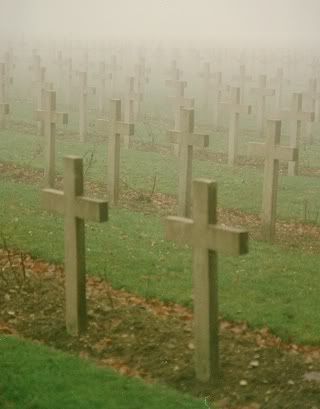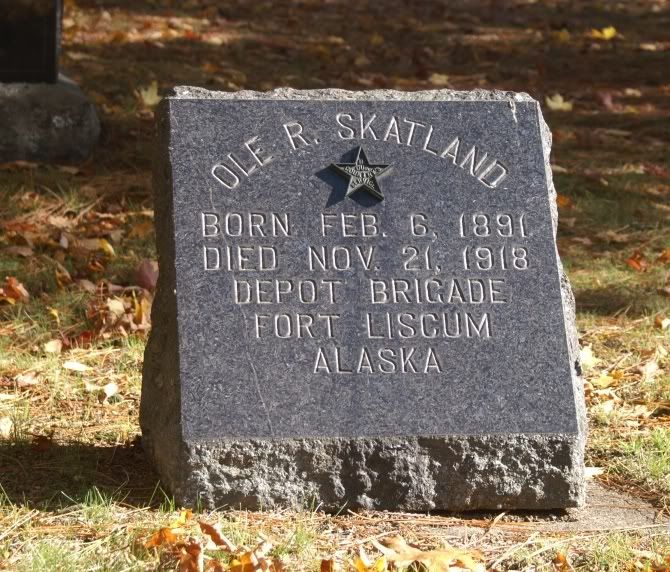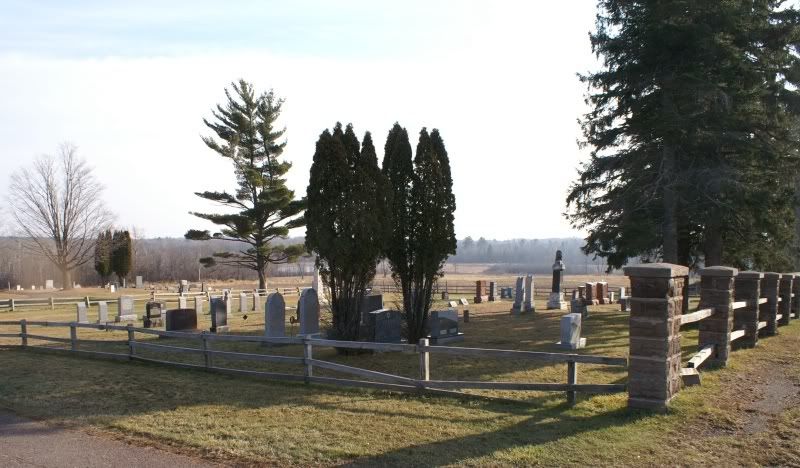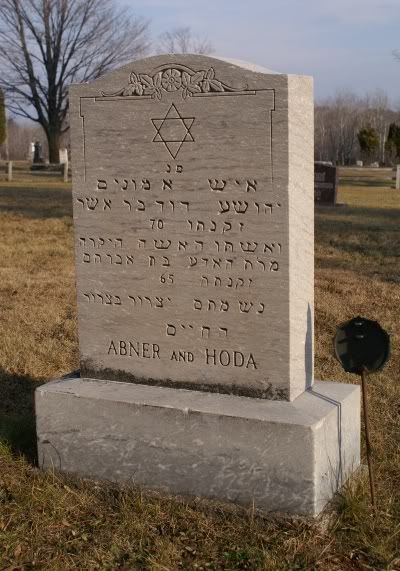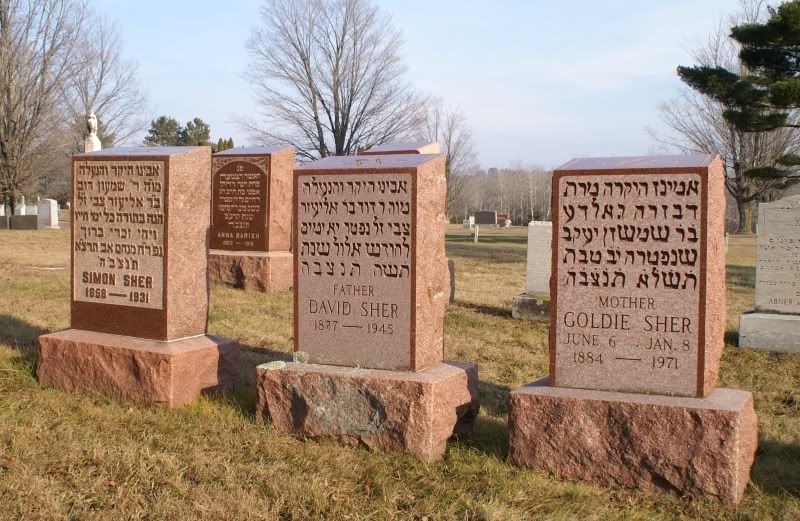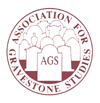
Over the past few years I've been noticing the tendency in cemeteries for grave sites to become much more personalized and rather pagan compared to what had been the American norm: a relatively simple grave marker and flowers, either real or plastic. Headstones are becoming more idiosyncratic, the portrait medallion and epitaphs have made a comeback, and carvings on the stones increasingly reflect the deceased's life rather than being abstract symbolism.
 The various offerings and memorabilia being heaped on graves these days can be rather baffling. Some items left make perfect sense from a pagan perspective: stuffed toys for a dead child, for example, or the ubiquitous "guardian" angels in various types and sizes. This mailbox for sending notes to the deceased is, however, a first. What's a person supposed to write? "Hope it's not too hot where you are?"
The various offerings and memorabilia being heaped on graves these days can be rather baffling. Some items left make perfect sense from a pagan perspective: stuffed toys for a dead child, for example, or the ubiquitous "guardian" angels in various types and sizes. This mailbox for sending notes to the deceased is, however, a first. What's a person supposed to write? "Hope it's not too hot where you are?" It was also rather intriguing that this grave was the only one in the cemetery (Oak Grove in Nacogdoches, Texas) that had any visible grave goods at all. One or two had flowers, but nothing else. The cemetery is old, with interments dating back to the 1830s, so it is possible the reason for the lack of flowers and other embellishments in most of the cemetery is there are no other recent interments. The Clarks are one of the oldest
 families in Nacogdoches -- William S. Clark signed the Texas Declaration of Independence and settled in the Sabine River basin in 1829 -- and maybe it was just luck that there was space in the corner of the family plot for Leon and Edna.
families in Nacogdoches -- William S. Clark signed the Texas Declaration of Independence and settled in the Sabine River basin in 1829 -- and maybe it was just luck that there was space in the corner of the family plot for Leon and Edna. This angel, incidentally, is the William S. Clark marker that stands in the center of the family plot.
